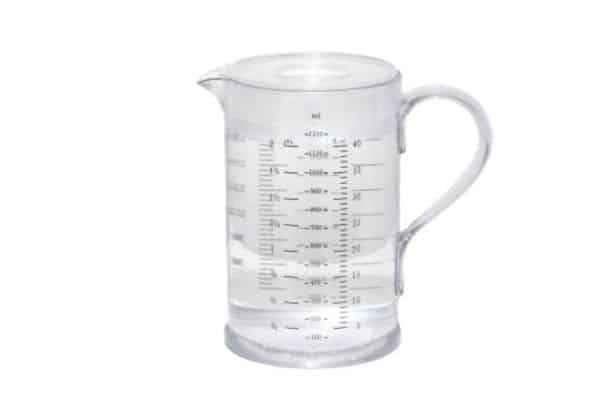Understanding distance measurements, mainly how many meters in a mile, is vital in a world where both the Imperial and Metric systems coexist. The mile, with its roots in ancient Rome, has evolved over centuries.
Initially defined by the number of paces in a Roman march, the mile found its place in the Imperial system, mainly used in the United States and the United Kingdom.
The Mile: Origin and Current Usage
In contrast, the meter, a cornerstone of the Metric system, emerged from the French Revolution’s drive for standardized measurements. It’s defined as the length of the path traveled by light in a vacuum in 1299,792,458299,792,4581 of a second.
How Many Years of College to Be a Pediatrician? New Update
The Meter: Definition and Global Adoption
Globally, the meter is widely adopted for scientific and everyday use. Despite this global preference, understanding conversions, like remains essential.
Such knowledge bridges the gap between measurement systems, enabling effective communication and understanding in various fields, from athletics to global travel.
The Metric and Imperial Systems: A Comparative Overview
When diving into the world of measurements, two main systems emerge the Metric and the Imperial. Knowing how to navigate both is crucial.
Overview of the Metric System (SI Units)
Introduced during the French Revolution, the Metric system uses base-10. It’s straightforward, making it a favorite for most countries. Key units include the meter, liter, and gram.
Overview of the Imperial System
The Imperial system, rooted in historical measurements from various cultures, is less uniform. Dominant in the US and UK, its units include the mile, gallon, and pound.
Comparison of the Metric and Imperial Systems
While the Metric system boasts of simplicity, the Imperial system carries the weight of tradition. They often intertwine in global contexts. For instance, in athletics, one might ask, “How many meters in a mile?” when comparing race lengths.
How and Why Different Regions Prefer Different Systems
Cultural history and early adoption patterns drive system preference. The Metric system’s clarity attracts many, but the Imperial system’s deep-rooted history holds firm in specific regions.
Converting Miles to Meters: The Essentials
Grasping the conversion from miles to meters is a skill that enhances understanding across different measurement systems.
Exact Conversion: How Many Meters in a Mile
One mile equates to exactly 1,609.344 meters. This figure is key for accurate conversions in various fields, from engineering to athletics.
45000 a Year is How Much an Hour: Breaking Down Your Income
Step-by-Step Guide to Converting Miles to Meters
To convert miles to meters, multiply the number of miles by 1,609.344. For example, to find out how many meters are in five miles, multiply five by 1,609.344, which equals 8,046.72 meters.
Common Conversion Mistakes and How to Avoid Them
A frequent error is approximating the conversion factor too roughly. While rounding to 1,600 can simplify mental math, it may lead to inaccuracies in precise calculations.
Practical Examples and Real-Life Applications
In real life, this conversion is crucial. Marathon runners, for instance, often switch between miles and meters during training and competitions. Being adept at such conversions enhances their understanding of race distances and pacing strategies.
Tools and Tips for Effective Distance Conversion
Navigating between miles and meters is made easier with modern tools and simple strategies.
Online Conversion Tools and Mobile Apps
For precise calculations, online converters and mobile apps are invaluable. They provide quick and accurate conversions, essential for professionals and students alike.
Mental Math Tricks for Quick Conversions
A handy mental math trick is remembering that a mile is approximately 1,600 meters. This rounded figure isn’t perfect for precise calculations, but works well for quick estimates.
Incorporating Conversions into Everyday Life and Education
Familiarizing oneself with these conversions through regular practice can be beneficial. Incorporate these into daily life, like estimating walking distances or during workouts. In education, it’s a practical skill that enhances understanding of both measurement systems.
How Many Days Until Easter: Countdown and Celebration Ideas
Conclusion
In our interconnected world, accurately converting distances, like knowing how many meters in a mile, is more than academic knowledge. It’s a practical skill that bridges cultural and geographic divides, enhancing global communication and cooperation.
Frequently Asked Questions
There are exactly 1,609.344 meters in a mile.
Understanding this conversion is crucial in fields like athletics, engineering, and international travel, where both measurement systems are used.
Yes, for quick estimates, you can use 1,600 meters as an approximate value for a mile.
Yes, there are various online converters and mobile apps available for accurate and quick conversions.
Yes, a mile is longer than a kilometer. One mile is approximately equal to 1.609 kilometers.
References
- How to Convert Miles to Meters – www.wikihow.com
- How Many Meters Are in a Mile? – www.beachbodyondemand.com






